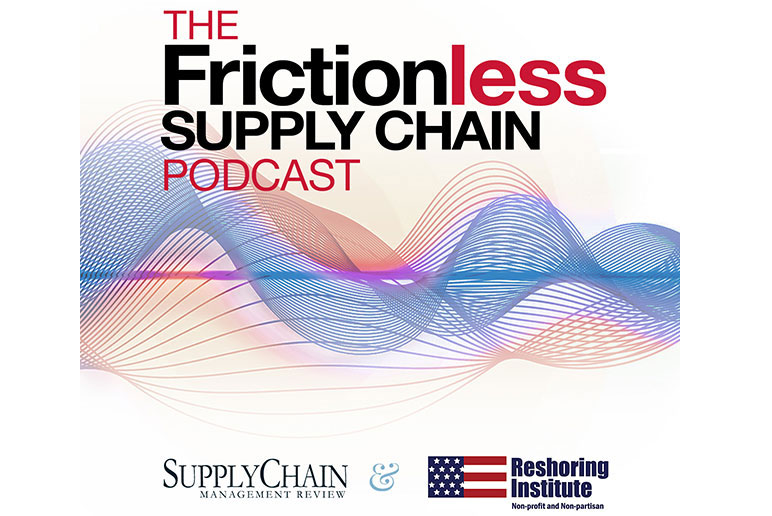In a recent letter to the U.S. Department of Commerce, National Customs Brokers and Forwarders Association of America, Inc. (NCBFAA) Transportation Committee NVOCC Sub-Committee Chairman Richard J. Roche responded to the Department's request for public comment on U.S. seaport efficiency and competitiveness issues for its “21st Century U.S. Port Competitiveness Initiative.”
Having attended numerous meetings and forums on the challenge of port congestion, Roche said, “You may not be surprised to hear that many of the themes are common from one meeting to the next just as much as they are common from one port to the next.”
He noted that congestion is still periodically wreaking havoc with fragile supply chains and needs to be fixed once and for all. Likening it to a championship boxing campaign, he said shippers are really just between “bouts” of transport gridlock.
“Time has proven that we are constantly in a delicate balance of all the factors necessary to keep ports running smoothly until such time as some outward force throws everything off, whereupon we quickly spiral downward.”
Among the issues contributing to congestion is the new generation of mega vessels calling Pacific Rim ports. These are the ships that are simply too massive to transit the newly expanded Panama Canal – which at first glance – seems to be a good thing. But there's some question as to whether the ports have the necessary analytics and infrastructure to accommodate such enormous inbound discharge.
Freight intermediaries are also concerned about drayage trucking. Driver dissatisfaction, hours of service and long wait times have long been issues haunting port authorities.
These worries are not unique to importers, however. U.S. exporters, too, have been apprehensive about many of the same issues. In his address to the Agriculture Transportation Coalition (AgTC) at their annual meeting in Long Beach last June, Federal Maritime Commission Chairman Mario Cordero said port congestion is not just a transportation issue – it's an economic competitiveness issue.
“The Commission must be on guard against any obstacle to moving exports successfully, whether the impediment is a physical restriction or policies and procedures that add unnecessary compliance burdens to the American shipper,” he said.
Dealing with port congestion and supply chain inefficiencies have been priorities of the Commission for the past several years. Earlier this year, the Commission launched the “Supply Chain Innovation Initiative,” which is working to develop process innovations that will improve the reliability, resilience, and competitiveness of the nation's global supply chain.
“The United States produces an abundance of high quality goods and commodities that are desired by companies and consumers around the world. It should be a common goal of both public and private entities that American exporters find a clear path to overseas markets and not a road riddled with hurdles. This is a goal that is consistent with the President's National Export Initiative, said Cordero. “Barriers to competition and efficiency will be challenged by the Commission,” he added.
Fortunately, California's three ports are doing their part to expedite throughput and keep ocean cargo supply chains fluid. In the second quarter of 2016, trucks were able move boxes at the ports of Los Angeles and Long Beach more quickly than in any other quarter over the last two years, according to monthly data reported by marine terminals and compiled by PierPass Inc.
At the same time, the Port of Oakland has introduced Monday-through-Thursday night gates week for harbor truckers at OICT, Oakland's largest marine terminal. The second shift is giving drivers more opportunity to move containerized cargo outside hectic 8-to-5 hours. It's also easing daytime crowding at terminal gates.
“Even if it costs them a bit more, this strategy is being embraced by most of the port's shippers,” said Oakland's executive director, Chris Lytle. “But they are insisting that these efficiencies remain in place.”
While these developments are encouraging, logistics managers are not likely to let their guard down if congestion becomes an issue again. They have too many options of the East and Gulf ports to ever let that happen again.
SC
MR

Latest Supply Chain News
Latest Resources

 Explore
Explore
Topics
Latest Supply Chain News
- Geopolitical readiness in supply chains: Strategic challenges for leaders
- Unlocking retention: The role employee engagement plays
- Can supply chain managers embrace an entrepreneurial mindset?
- Challenges to ESG reporting
- With capacity to spare, logistics real estate demand remains subdued
- Tariffs, taxes and trade: The impact of Trump’s reelection on the supply chain
- More latest news
Latest Resources

Subscribe

Supply Chain Management Review delivers the best industry content.

Editors’ Picks





